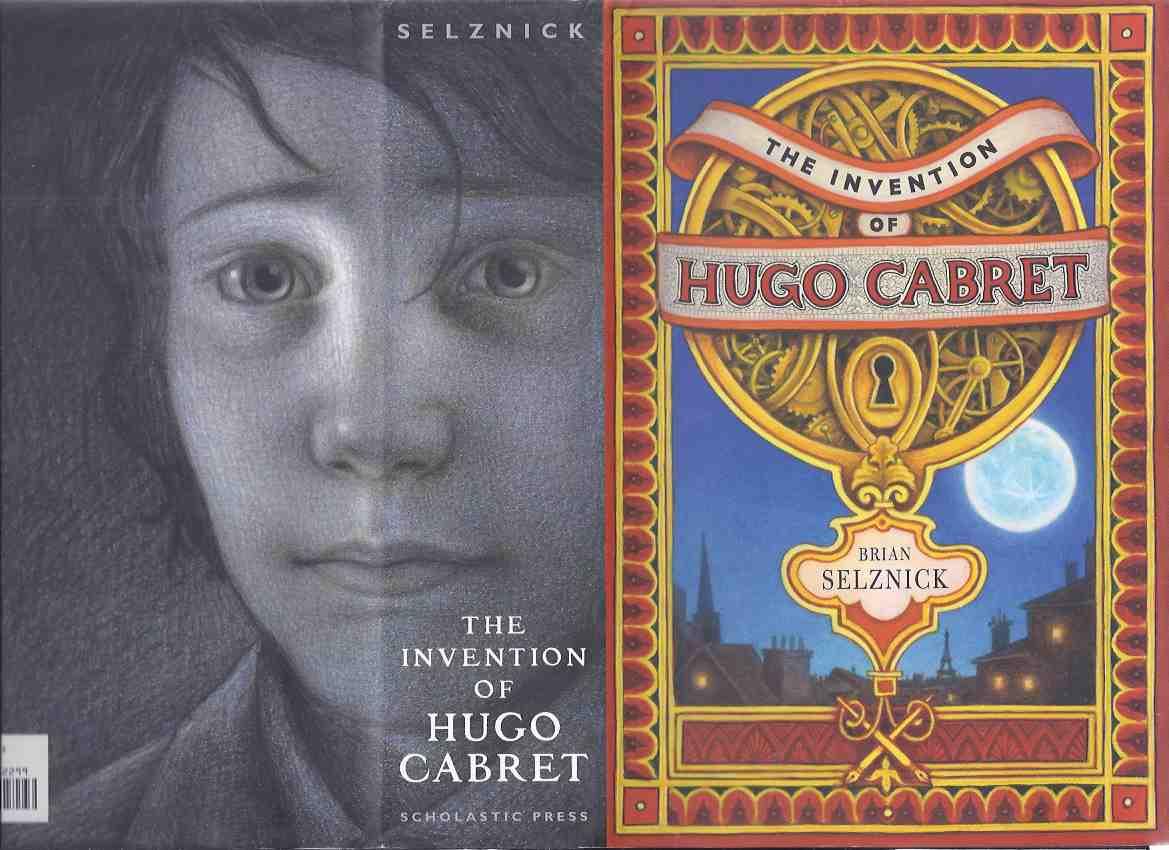Selznick, B. (2007). The
invention of Hugo Cabret. New York: Scholastic.
Description:
"ORPHAN, CLOCK KEEPER, AND THIEF, twelve-year-old Hugo
lives in the walls of a busy Paris train station, where his survival depends on
secrets and anonymity. But when his world suddenly interlocks with an eccentric
girl and the owner of a small toy booth in the train station, Hugo’s undercover
life, and his most precious secret, are put in jeopardy. A cryptic drawing, a
treasured notebook, a stolen key, a mechanical man, and a hidden message all
come together...in The Invention of Hugo Cabret."
"This 526-page book is told in both words and pictures.
The Invention of Hugo Cabret is not
exactly a novel, and it’s not quite a picture book, and it’s not really a
graphic novel, or a flip book, or a movie, but a combination of all these
things. Each picture (there are nearly three hundred pages of pictures!) takes
up an entire double page spread, and the story moves forward because you turn
the pages to see the next moment unfold in front of you." Retrieved from
the website
for the book on 10/2/2017.
Awards:
Caldecott medal 2008
Recommended for ages 9-12 by Publisher's Weekly (See source below), and
Grades 3-6 by School Library Journal (Retrieved from Barnes & Noble Website 10/2/2017).
Grades 3-6 by School Library Journal (Retrieved from Barnes & Noble Website 10/2/2017).
Review:
Publishers Weekly Starred Review
"Here is a true masterpiece - an artful blending of
narrative, illustration and cinematic technique, for a story as tantalizing as
it is touching. Twelve-year-old orphan Hugo lives in the walls of a Paris train
station at the turn of the 20th century, where he tends to the clocks and
filches what he needs to survive. Hugo’s recently deceased father, a
clockmaker, worked in a museum where he discovered an automaton: a human-like
figure seated at a desk, pen in hand, as if ready to deliver a message. After
his father showed Hugo the robot, the boy became just as obsessed with getting
the automaton to function as his father had been, and the man gave his son one
of the notebooks he used to record the automaton’s inner workings. The plot
grows as intricate as the robot’s gears and mechanisms: Hugo’s father dies in a
fire at the museum; Hugo winds up living in the train station, which brings him
together with a mysterious toymaker who runs a booth there, and the boy
reclaims the automaton, to which the toymaker also has a connection. To
Selznick’s credit, the coincidences all feel carefully orchestrated; epiphany
after epiphany occurs before the book comes to its sumptuous, glorious end.
Selznick hints at the toymaker’s hidden identity (inspired by an actual
historical figure in the film industry, Georges Méliès) through impressive use
of meticulous charcoal drawings that grow or shrink against black backdrops, in
pages-long sequences. They display the same item in increasingly tight focus or
pan across scenes the way a camera might. The plot ultimately has much to do
with the history of the movies, and Selznick’s genius lies in his expert use of
such a visual style to spotlight the role of this highly visual media. A
standout achievement. Ages 9-12. (Mar.) Copyright © Reed Business Information,
a division of Reed Elsevier Inc. All rights reserved."
Retrieved from the website for the
book 10/25/2017.
I am adding this book to my collection for grades 3-5 because it is so
unique and enchanting. As the description says it is neither novel, picture
book, nor graphic novel, but a hybrid of all three formats. Children may
be inspired by this book to pursue future studies in drawing, filmmaking, or
engineering. This book is at every level inspiring. The illustrations are breathtaking and riveting. The compulsion to turn the page and take in more is strongly felt in both the drawn and written sections of the book.
Keywords: Automaton,
Clockworks, Orphans, Georges Méliès
This work can be used for the Kentucky Education Standards for 3rd grade media arts.
MA:Re7.1.3
a. Identify and describe how messages are created by components in media artworks.
b. Identify and describe how various forms, methods, and styles in media artworks manage audience experience.
Retrieved 11/27/17 from the Kentucky Education Standards p. 31.
Kentucky Department of Education. (2017). Kentucky DAcademic Standards. Retrieved November 27, 2017, from https://education.ky.gov/curriculum/standards/Pages/default.aspx
This work can be used for the Kentucky Education Standards for 3rd grade media arts.
MA:Re7.1.3
a. Identify and describe how messages are created by components in media artworks.
b. Identify and describe how various forms, methods, and styles in media artworks manage audience experience.
Retrieved 11/27/17 from the Kentucky Education Standards p. 31.
Kentucky Department of Education. (2017). Kentucky DAcademic Standards. Retrieved November 27, 2017, from https://education.ky.gov/curriculum/standards/Pages/default.aspx

No comments:
Post a Comment